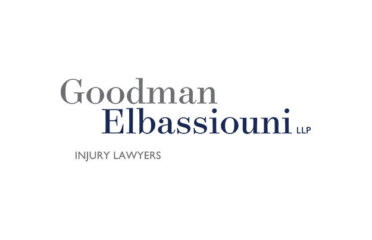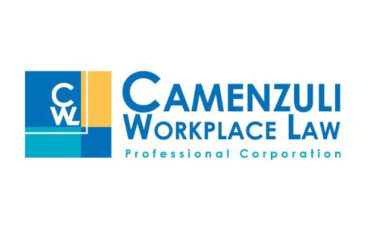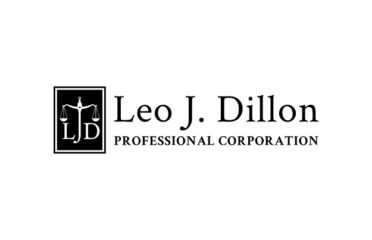What is WSIB Workplace Injury Law in Canada?
Workplace safety and injury compensation are fundamental rights for Canadian workers. The Workplace Safety and Insurance Board (WSIB) governs workplace injury claims in Ontario, while other provinces operate similar workers’ compensation systems. This guide explains how WSIB protects employees and employers, the claims process, benefit entitlements, and recent legal developments affecting over 300,000 Ontario workplaces and 5.6 million workers.
1. What is WSIB?
The WSIB is Ontario’s workplace insurance system that:
-
Provides no-fault insurance coverage for work-related injuries/illnesses
-
Covers medical treatment and lost wages
-
Operates under the Workplace Safety and Insurance Act (WSIA)
-
Serves as the exclusive remedy (blocks most injury lawsuits)
2023 Stats: 200,000+ claims filed; $2.8B in benefits paid
2. Coverage Across Canada
| Province | Workers’ Comp Board | Coverage Model |
|---|---|---|
| Ontario | WSIB | Mandatory (most sectors) |
| British Columbia | WorkSafeBC | Mandatory |
| Alberta | WCB Alberta | Mandatory |
| Quebec | CNESST | No-fault + right to sue |
Exception: Federal workers (covered by Government Employees Compensation Act)
3. Who is Covered?
A. Compulsory Industries (Ontario)
-
Construction
-
Manufacturing
-
Health care
-
Most businesses with employees
B. Exemptions
-
Certain professional services
-
Financial institutions
-
Sole proprietors (can opt-in)
Coverage Gap: Only 70% of Ontario workers are protected
4. The WSIB Claims Process
A. Reporting an Injury
-
Employee Responsibility
-
Report injury to employer immediately
-
Seek medical attention
-
File Form 6 within 6 months
-
-
Employer Responsibility
-
Report to WSIB within 3 days (Form 7)
-
Maintain job for 12 months (if able)
-
B. Claim Adjudication
-
Medical evidence review (doctor’s reports)
-
Entitlement decision within 30-90 days
-
Appeal rights if denied
Approval Rate: 85% of uncontested claims
5. Benefit Types & Amounts
A. Loss of Earnings (LOE)
-
85% of pre-injury net earnings
-
Maximum: $1,146/week (2024)
-
Minimum: $443/week
B. Health Care Benefits
-
100% coverage for approved treatments
-
Includes:
-
Physiotherapy
-
Prescriptions
-
Psychological counseling
-
Medical devices
-
C. Non-Economic Loss (NEL)
-
Permanent impairment awards
-
Calculated using NEL rating schedule
-
Example: 10% back impairment = ~$15,000
D. Return-to-Work Services
-
Workplace modifications
-
Retraining programs
-
Labour market re-entry (LMR) plans
6. Employer Responsibilities
A. Premium Payments
-
Based on payroll and claim history
-
Experience rating adjustments
-
Average Rate: $1.65/$100 insurable earnings
B. Workplace Safety Requirements
-
Joint health & safety committees
-
Hazard assessments
-
Accident reporting
C. Re-Employment Obligations
-
Must offer suitable work for 12 months
-
Accommodation duties under Human Rights Code
Penalty: Up to $100,000 for non-compliance
7. Recent Legal Changes (2024)
A. Mental Health Expansion
-
Easier claims for chronic stress
-
Presumption for PTSD in first responders
B. Digital Claims Processing
-
Mandatory e-filing for large employers
-
AI-assisted claim triaging
C. Premium Adjustments
-
5% rate reduction for safe industries
-
Surcharges for repeat violators
D. Gig Worker Coverage
-
Pilot project for app-based workers
-
Limited benefits structure
8. Dispute Resolution Process
A. Internal Reviews
-
Entitlement Review (by WSIB specialist)
-
Appeals Services Division (ASD)
B. External Appeals
-
Workplace Safety and Insurance Appeals Tribunal (WSIAT)
-
Final administrative appeal
-
12-18 month backlog
-
-
Judicial Review (to Divisional Court)
Success Rate: 22% of appeals overturn decisions
9. Key Legal Principles
A. “Arising Out of Employment” Test
-
Injury must be work-related
-
Includes business trips, work events
-
Case Example: Decision No. 2001 (attending holiday party)
B. Chronic Stress Claims
-
Must prove workplace was significant cause
-
2023 Change: No longer requires “acute reaction”
C. Recurring Injuries
-
Aggravation of pre-existing conditions covered
-
Must show work contributed materially
10. Provincial Comparisons
A. Quebec Differences
-
Right to sue employers
-
Higher benefit maximums ($1,514/week)
B. Alberta Features
-
Smaller employer coverage threshold
-
Vocational rehabilitation emphasis
C. BC Innovations
-
Mental health first aid requirement
-
Cannabis impairment prevention programs
11. Case Study: Denis v. WSIB (2022)
This WSIAT ruling:
-
Expanded telework injury coverage
-
Recognized home office ergonomic injuries
-
Awarded 18 months of LOE benefits
12. Common Claim Challenges
A. Medical Evidence Issues
-
Insufficient doctor’s notes
-
Conflicting medical opinions
-
Delayed specialist reports
B. Return-to-Work Disputes
-
Suitable work definitions
-
Accommodation limits
-
Constructive dismissal risks
C. Pre-Existing Conditions
-
Apportionment debates
-
Recurrence vs. new injury
13. The Future of WSIB Law
Emerging trends:
-
Preventive mental health programs
-
Climate-related injury claims (heat stress)
-
Exoskeleton technology for injury prevention
-
Blockchain claims processing
14. Practical Tips
For Workers:
-
Report injuries immediately
-
Keep detailed pain journals
-
Attend all medical exams
-
Consult WSIB office before returning to work
For Employers:
-
Document all incidents
-
Cooperate with return-to-work plans
-
Challenge questionable claims promptly
-
Invest in safety training
Conclusion
WSIB law represents a crucial balance between protecting injured workers and maintaining sustainable workplaces. With Ontario’s system handling over 200,000 claims annually, understanding these rights and processes helps ensure fair outcomes when workplace injuries occur. Recent expansions in mental health coverage and digital services are modernizing the system, while ongoing challenges around claim delays and complex appeals persist.
As the Workplace Safety and Insurance Appeals Tribunal has emphasized, the system exists to provide “dignity and financial security” to injured workers. By knowing your rights under WSIB legislation – whether you’re an employee navigating a claim or an employer managing workplace safety – you contribute to a fairer, safer Ontario workforce. In an era of changing work patterns and emerging health risks, this knowledge becomes ever more vital for all workplace participants.








